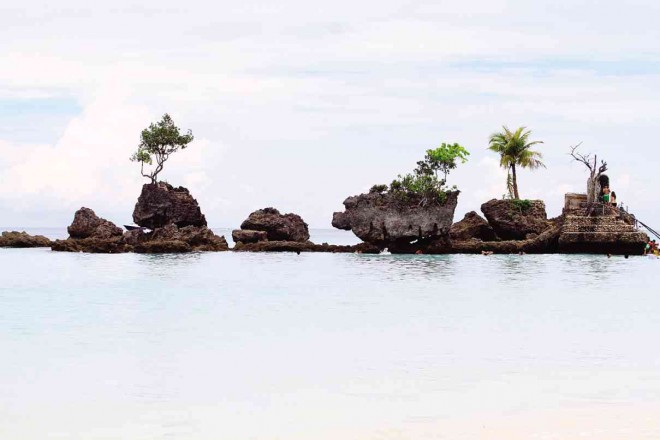DENR asked: Stop decay of Boracay
ILOILO CITY — A nationwide environmental network is asking the Department of Environment and Natural Resources (DENR) to put its foot down on more development activities in Boracay and regulate the number of tourists going to the island amid findings that coliform bacteria, partly caused by human and animal feces, continue to pollute the island’s waters.
“It will take more than a moratorium and running after environmental violators to bring back the pristine environment and beauty of the island,” said Clemente Bautista Jr., national coordinator of the Kalikasan People’s Network for the Environment.
The network is composed of at least 40 environmental groups.
Bautista said government agencies and the local government should focus on the comprehensive rehabilitation of the island instead of attracting more tourists.
“Aside from mismanagement, Boracay’s environmental problems show that tourism activities have exceeded the capacity of the island’s ecology to rejuvenate itself. There are simply too many tourists going there,” he said.
Article continues after this advertisementNearly 1.5 million tourists visited the 1,032-hectare island last year, according to data from the Department of Tourism.
Article continues after this advertisementMost of the tourists are concentrated along the 4-kilometer white beach at the western side of the island.
Environment Secretary Ramon Paje earlier said in a statement that the DENR was in the process of an inventory of resorts and other commercial establishments to check on their compliance to environmental rules and laws.
The agency would inspect the establishments’ connections to the island’s sewage disposal system.
The DENR would issue a cease and desist order on any business that violates environmental laws, according to Paje.
Paje said algal bloom along Boracay’s shoreline indicated water pollution resulting from “poor waste management with sewage being dumped into the waters.”
Many business operators and residents have claimed that the algal bloom is seasonal and “natural” but environmentalists said it is an indication of feces and other waste materials polluting the water.
While the DENR has said that the water in the main swimming area along the white beach is safe for swimming, coliform bacteria levels in Sitio Bulabog in Barangay Balabag at the eastern side of the island have reached 47,460 most probable number (MPN) per 100 millimeter (ml), much higher than the tolerable level for swimming of 1,000 MPN/100ml.
